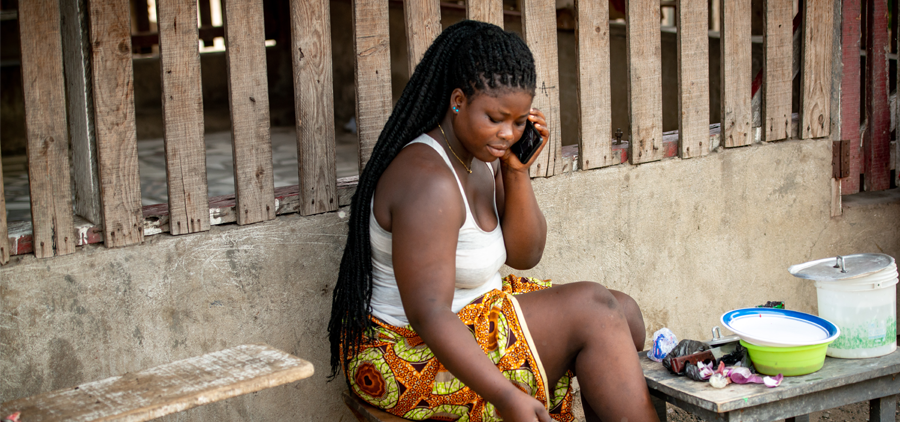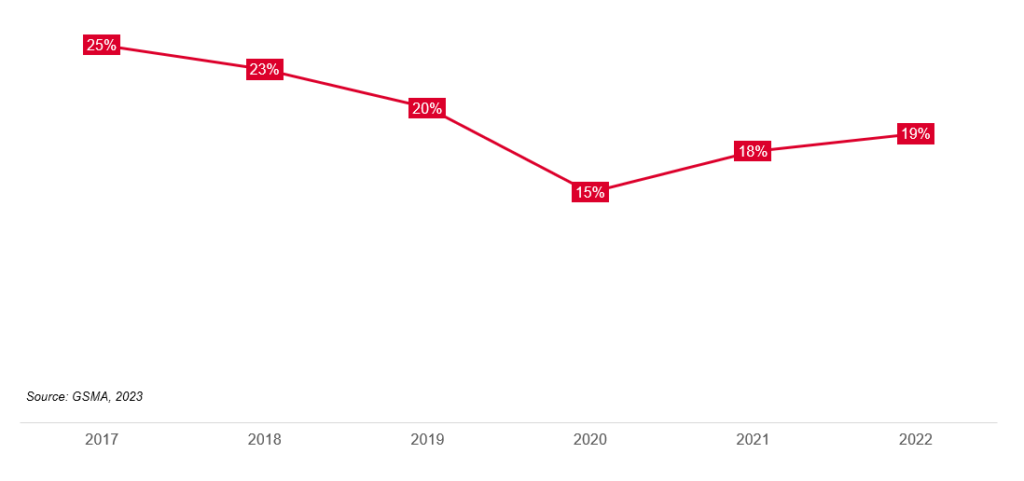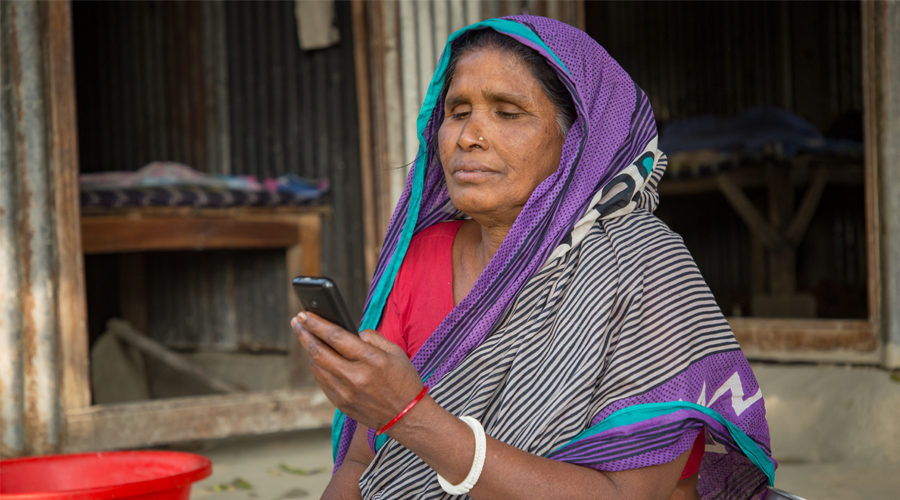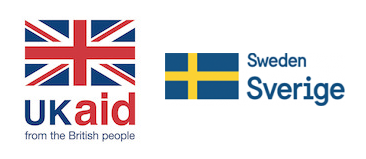#EmbraceEquity: The mobile gender gap
Last year on International Women’s Day we shared that, for the first time, progress in reducing the gender gap in mobile internet across low-and middle-income countries (LMICs) had stalled and, in some countries, even reversed. This was the result of a slowdown in the growth rate at which women were adopting mobile internet across LMICs in contrast with continued high growth rates for men. This worrying slowdown in digital inclusion for women highlighted that renewed investment and focus in addressing the digital gender divide was needed. The social and economic impacts of the COVID-19 pandemic had disrupted almost every aspect of people’s lives, but women were disproportionately negatively impacted.
It is important to understand if this negative trend persists and where investment is needed, so we are continuing to collect this data and are grateful to the UK Foreign, Commonwealth & Development Office (FCDO) and the Swedish International Development Cooperation Agency (SIDA) for their support in enabling us to do so. We will be publishing our latest Mobile Gender Gap Report 2023 in May, but for International Women’s Day we are sharing a preview of some of our updated mobile gender gap numbers.

The Mobile Gender Gap: Our latest data
Unfortunately, our latest data shows that while more women across LMICS are using mobile internet than ever before, the rate of mobile internet adoption further slowed for women over the last year. Men’s rate of adoption also slowed, but there are still significantly more men using mobile internet than women and the mobile internet gender gap remains relatively unchanged.
Women are now 19% less likely than men to use mobile internet across LMICs which means that there is still a stark digital divide between men and women. The mobile internet gender gap is even wider in South Asia and Sub-Saharan Africa. In South Asia, for example, the mobile internet gender gap is still 41%.
It is also important to look at the underlying gender gap in smartphone ownership since when women own a smartphone their awareness and use of mobile internet is almost on par with men. Unfortunately progress in reducing the gender gap in smartphone ownership also remains stalled. Women are now 17% less likely than men to own a smartphone.
Our latest data also shows that across survey countries those reporting decreased mobile internet use in 2022 were more likely to be women, particularly those who are less educated and live in rural areas.
This year’s data shows that progress in reducing the mobile internet gender gap remains stalled
Gender gap in mobile internet across low- and middle-income countries 2017-2022:

The need for action
This further slowdown in digital inclusion for women, particularly the most underserved, is not surprising given that women continue to be disproportionately negatively impacted by the continuing economic and social disruptions caused by the COVID-19 pandemic, climate change, and other global crises. However, it is a clear call to action for the need to increase investment and focus on addressing the gender gap in mobile internet.
Tackling the mobile internet gender gap is critical since mobile internet is the primary – and often only – way most women access the internet in LMICs. It provides them with access to critical information and services such as healthcare, education, financial services and income-generating opportunities. Without having access to the internet, those who are not connected are less able to cope with the continuing economic and social disruptions.
The mobile gender gap is not going to close on its own. Its root causes are driven by a complex set of social, economic and cultural factors that result in women experiencing barriers to mobile ownership and use including affordability, knowledge and skills, relevance, access and safety and security concerns. These are the same barriers men face but women tend to experience these barriers more acutely due to structural inequalities and underlying social norms, including disparities between men and women in terms of education and income.

Industry Action
By taking concrete actions to address women’s needs and the barriers they face to accessing and using mobile internet, it is possible to narrow the digital gender gap. Mobile operators across Africa, Asia and Latin America are demonstrating this. Through the Connected Women Commitment Initiative, over 40 mobile operators have made formal commitments to reduce the gender gap in their customer base for their mobile internet and/or mobile money services (women are 28% less likely than men to own a mobile money account across LMICs). Since this initiative was launched in 2016, they have successfully reached over 65 million additional women with mobile internet and mobile money services.
Mobile operators have been accelerating digital and financial inclusion of women by considering and addressing the barriers and needs of women in the design and implementation of mobile products and services. This has included through offering more affordable internet-enabled handsets to address women’s price sensitivity; providing digital skills training targeting women, including rural women; recruiting female agents and merchants; developing and marketing use cases that appeal to women; creating mobile financial products for traditional women’s savings groups; re-designing apps to make them simpler to use for those less digitally literate; improving the data top-up process to be safer and more appealing to women; and providing free emergency minutes and alerts to help women feel safer when using their mobile phones, among a wide range of other efforts that seek to address the barriers women face.
However, addressing the mobile gender gap requires targeted action from all stakeholders – policymakers, mobile operators, the development community and others – working together to ensure women and their families can reap the full benefits of connectivity. These actions need to be informed by an understanding of the issue and opportunities for addressing it. Our upcoming Mobile Gender Gap Report 2023 in May will provide more detailed data on the mobile gender gap and barriers faced by women in LMICs to help inform efforts.
Women are not a homogeneous group and it is important to understand the needs and barriers of women in different contexts. For example, mobile phones can be a crucial tool for supporting female micro-entrepreneurs but there is limited data on how they are currently using mobile for their business as well as the particular barriers they face and the opportunities to reach them. We will follow up the Mobile Gender Gap Report with findings from new research, funded by the Bill and Melinda Gates Foundation, to help fill this important data gap.
In support of the #EmbraceEquity theme of International Women’s Day this year we would like to call on all stakeholders to take action to address the mobile gender gap. The mobile gender gap not only reflects existing gender inequities, but also threatens to compound them.
With our latest data highlighting a slowing down in digital inclusion for women we can’t be complacent. It’s not a simple task, but it is imperative that we meet the challenge head-on to ensure that women are not being left behind in an increasingly connected world.
Our Mobile Gender Gap Report 2023 will be available here from May 2023. To receive our upcoming reports please sign up to our newsletter here.

The Connected Women programme is funded by the UK Foreign, Commonwealth & Development Office (FCDO) and the Swedish International Development Cooperation Agency (SIDA), and is supported by the GSMA and its members.


